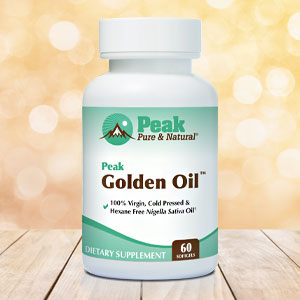Get Easy Health Digest™ in your inbox and don’t miss a thing when you subscribe today. Plus, get the free bonus report, Mother Nature’s Tips, Tricks and Remedies for Cholesterol, Blood Pressure & Blood Sugar as my way of saying welcome to the community!
Meet the superbugs living in your makeup bag

I have a bad habit. It puts my health at risk daily. But I can’t (or don’t want to) quit it. I’ve been doing it since I was a teenager, after all.
Despite what you may be thinking, it’s nothing too crazy. It’s not smoking, drinking, doing drugs or even eating donuts. It’s wearing makeup.
Makeup is filled with chemicals — everything from phthalates to parabens to formaldehyde. And these chemicals can affect your hormonal balance, reduce fertility, cause allergic reactions and even increase your cancer risk.
Yet many women (just like me) continue to wear makeup daily. Granted, some makeup brands are healthier than others. I try to buy from clean, green, organic brands. But even if you do that, you’re not getting off risk-free. Why?
There’s another dangerous component in your makeup beyond chemicals. And this time it’s something makeup manufacturers didn’t intentionally include in their fancy formulas — superbugs.
The trendy beauty product that’s teeming with superbugs
A new study from researchers at Aston University in the UK found that many of our makeup products are contaminated with superbugs.
In the study, researchers tested five categories of used beauty products: lipstick, lip gloss, eyeliners, mascaras and beauty blenders. And guess what?
Roughly, 79 to 90 percent of these products contained bacteria, including potentially deadly superbugs like E. coli, Citrobacter freundii and Staphylococci.
Beauty blenders contained the most harmful bacteria. In case you don’t know, beauty blenders are egg-shaped sponges used to apply makeup. They’ve become popular in the last few years because they make your foundation look more natural, while still providing great coverage.
Researchers say beauty blenders are major superbug magnets because foundation makes them damp, and bacteria love dampness. But there’s also a hygiene issue happening…
Beauty blenders get dirty quickly, which means they need to be washed or replaced frequently. And most people just aren’t doing that enough. In fact, 93 percent of beauty blenders tested in the study had never been washed and 64 percent of them had been dropped on the floor during use. Yikes!
But here’s the big question: What dangers could the superbugs hiding in your makeup case cause you?
Well, if these bacteria get into your eyes, mouth, cuts or scrapes, they could cause anything from skin infections to blood poisoning. And the risk is especially high for people who have compromised immune systems.
The secret to superbug-free makeup
The European Union has very strict hygiene standards for makeup manufacturers. They say that E. Coli shouldn’t be found in any concentration in new makeup products. And they require expiration dates on makeup products (which isn’t required in the U.S.). But obviously, there’s nothing governmental regulators can do once the makeup is in your hands.
So, how do you protect yourself from dangerous bacteria in your makeup?
Related: 3 personal care products you’d be better off making yourself
Well, first off, keep your makeup tools clean. That includes beauty blenders, makeup brushes and any other devices that touch your face. If you use a beauty blender, you should give it a quick rinse after every use and replace it every three months at a minimum. You should clean makeup brushes every week to two weeks, depending on how often you use them.
Also, avoid using makeup that’s past its prime. The older the makeup, the more bacteria it likely contains. Since makeup manufacturers aren’t required to put expiration dates on makeup in the U.S., here are some shelf life guidelines that can help you decide if your makeup is a bacterial hazard that’s better tossed in the trash:
- Foundation shelf life: six months to one year
- Lipstick, liner and gloss shelf life: one year
- Brow and eyeliner pencils shelf life: one year
- Mascara shelf life: three months
- Liquid eyeliner shelf life: three to four months
- Blush and powder shelf life: two years
- Cream blush and highlighter stick shelf life: 12 to 18 months
- Eyeshadow shelf life: three to six months
Sources:
- Revealed: The deadly superbugs lurking in more than nine in ten make-up bags — MedicalXpress
- Microbiological study of used cosmetic products: highlighting possible impact on consumer health — Journal of Applied Microbiology
- How Often Should You Replace Your Beauty Blender? — Allure
- How to Clean Your Makeup Brushes (and How Often You Should Do It) — Allure
- What You Really Need to Know About Makeup Expiration Dates — Byrdie













